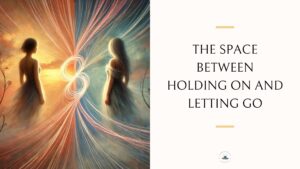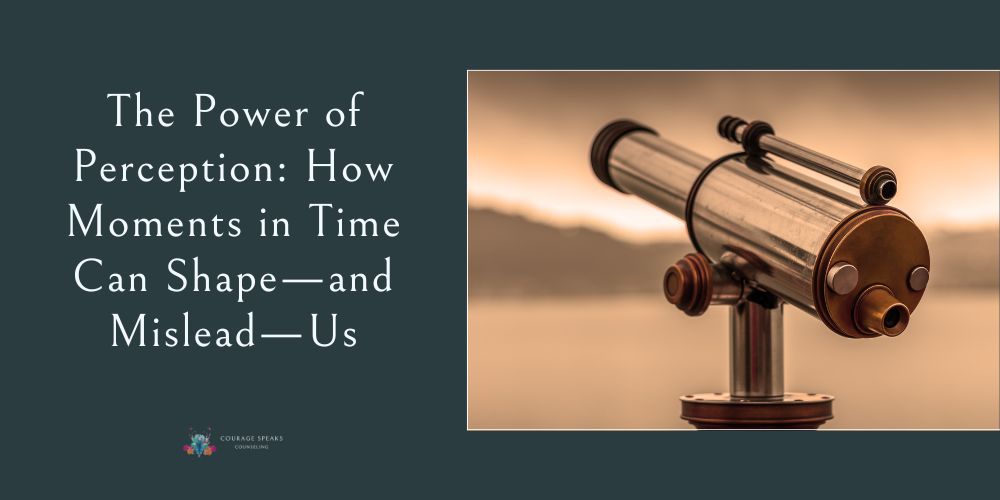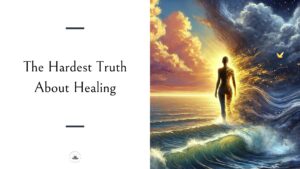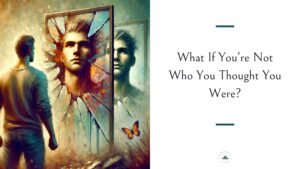Our perception of a moment in time can shape us profoundly, sometimes leaving us with beliefs that stick, whether they’re true or not. In an instant, our mind forms conclusions about who we are, how safe the world is, and what we can expect from others. These conclusions become the lenses through which we see everything else in life. When those beliefs are rooted in fear or pain, they can keep us trapped in cycles of suffering.
As we grow and gain new insights, we often find ourselves looking back at those moments with a different perspective. Intellectually, we might recognize that the beliefs we formed in that moment aren’t true, but something inside us still clings to them. Even when we know better, it’s common to feel the old story gripping us tightly: “I *know* this isn’t true anymore, but it still *feels* true.”
This disconnect creates an inner tension—a split within ourselves. On one hand, there’s the part of us that’s ready to move forward, armed with new knowledge and awareness. On the other, there’s the part still holding onto the old belief because it feels safer to stick with what it knows. This internal conflict can make it difficult to trust our own instincts and intuition. How can we trust ourselves when we feel torn between what we know and what we feel?
The key is to approach these parts of ourselves with compassion. Each part holds its own truth and has been working to protect us in the best way it knows how. The part that clings to outdated beliefs isn’t trying to sabotage us; it’s trying to keep us safe based on what it learned in the past. The part that’s frustrated and ready to move on is equally important, pushing us toward growth and healing. Both parts are seeking the same thing: our well-being.
When we engage with these different parts, allowing them to express themselves without judgment, something shifts. The rigid belief that once felt like an unchangeable truth begins to soften. The past moment we keep revisiting starts to change shape as our understanding deepens and we integrate new perspectives. This process can feel confusing—how can something that once felt so true now seem questionable? But that confusion is a sign of growth. It shows that the old lens is loosening its hold.
Old beliefs can be stubborn, especially when they’ve been central to how we see ourselves and the world. Letting them go requires patience and a willingness to revisit those moments with fresh eyes. As we do, the parts of us that have been stuck in survival mode can begin to relax, making room for new ways of being. The internal dissonance begins to resolve, and with it, our connection to ourselves deepens.
This reconnection is what we’re truly longing for. The loneliness we often feel isn’t just about needing something external; it’s about needing to reestablish trust and harmony within ourselves. Once that internal connection is restored, the rest—whether it’s relationships, clarity, or peace—tends to follow naturally.
Growth isn’t linear, and neither is healing. We might revisit the same memories and beliefs many times, each time from a slightly different angle. What matters is that we give ourselves permission to engage in this process without rushing to find answers. Over time, the parts of us that felt split and conflicted start to come together, and we find a deeper sense of trust in ourselves. When we reconnect with these fragmented parts, we open the door to the kind of genuine connection and peace we’ve been searching for all along.
Embracing Shadows, Illuminating Hope,
Chelsey Fjeldheim, LCSW
Empowering Souls on the Path of Healing
Copyright © 2024 Chelsey Fjeldheim, Courage Speaks Counseling




